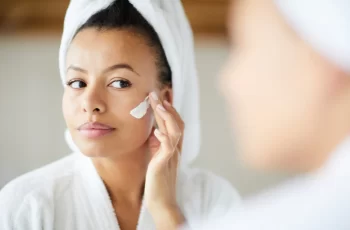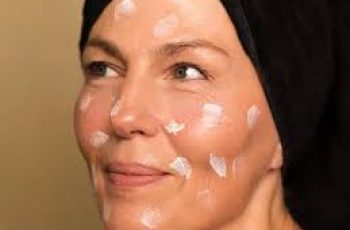
Mandelic Acid In Skin Care
Mandelic acid (MA), a popular ingredient in skincare, has many benefits and can treat a variety of skin concerns. As a type of alpha hydroxy acid (AHA), it is loved for its gentle yet effective exfoliating properties. This article discusses its mechanism of action, benefits, conditions it can treat, and its safety profile, especially during pregnancy and breastfeeding. Additionally, we will discuss the necessity of using sun protection when incorporating mandelic acid into your skincare routine.
Is this ingredient good for your skin? It depends upon which of the 16 Skin Types you are!
Mandelic acid is an AHA derived from bitter almonds
It is a gentle exfoliant
It can make you more susceptible to sun damage so wear SPF
Safe in pregnancy and when breastfeeding
What is Mandelic Acid?
Mandelic acid is an alpha hydroxy acid derived from the kernel of bitter almonds. It is chemically known as 2-phenyl-2-hydroxyacetic acid. It is an acid and therefore has a low pH. The pKa of mandelic acid is 3.41. This means that the strength of MA depends upon what pH it is formulated at and what concentration is in the formula.
Mandelic Acid Skin Care Products
I’m a dermatologist in Miami who specializes in designing skin care routines. I choose MA for my patients with resistant hyperpigmented skin types. It is not right for everyone, so use caution when you choose to use serums, creams, toners, and peels with mandelic acid.
It is important to realize that all types of MA products including toners, serums, lotions, creams, peels, and pads are exfoliants. Over using an exfoliant can lead to skin sensitivity, inflammation, and hyperpigmentation. So shop using your skin type and we will help you decide if MA is right for you. If you see your skin type octagon next to any of the products with mandelic acid shown below, you will the product is right for you. If you do not see your octagons it means one or more of the following:
You need to take the quiz to diagnose your skin type
You need to log in
None of these are right for your skin type
Mandelic Acid Serum
Which mandelic acid serum is best depends upon which skin condition you are treating. Here are some of our dermatologist-recommended mandelic acid serums. Each medical-grade serum works best in a consistent and correct skin care routine customized for your skin type.
If you have dark spots and need a serum to treat the skin pigmentation, this is my favorite mandelic aid serum that lightens dark spots.
Dark spots from acne? This is our pick for the best serum to make these pimple marks go away faster. Luckily, they are usually not true acne scars and will clear with time (and sunscreen).
Mandelic Acid Peel
You can use peels to enhance skin texture and radiance. To incorporate mandelic acid peels into your skincare routine, apply the peel 2-3 times a week, allowing your skin to adjust to the exfoliation. However, be cautious not to over-exfoliate, especially if you are also using potent ingredients like retinol and ascorbic acid, which can increase skin sensitivity.
Peels are not right for all skin types- beware!
MA peels may be right for oily skin types with resistant skin, but only after you have increased the retinol in your regimen to a high strength retinol. If you have used the high strength retinol every night for 4 weeks without redness and irritation, only then should you add this peel 2- 3 times a week.
For more advice- ask our skin care concierge AI bot to guide you.
How Does Mandelic Acid Work?
Mandelic acid works primarily through exfoliation, a process that involves the removal of dead skin cells from the skin’s surface. This AHA breaks down the bonds between dead keratinocytes, the predominant cell type in the epidermis. By dissolving these intercellular connections, mandelic acid helps to slough off the outermost layer of dead skin cells, revealing the fresher, more radiant skin beneath.
Unlike other AHAs, such as glycolic acid, mandelic acid has a larger molecular structure. This larger size allows for slower and more even penetration into the skin, reducing the likelihood of irritation while still delivering effective exfoliation. This makes it more gentle than other AHAs.
Benefits
The benefits of mandelic acid in skincare are multifaceted:
Smoother Skin Texture : By promoting the shedding of dead skin cells, mandelic acid helps to smooth out the skin’s surface, reducing rough patches and uneven texture.
Radiant and Glowing Skin : Exfoliation enhances skin radiance and luminosity by allowing light to bounce off the skin’s surface making you glow.
Improved Penetration of Other Ingredients : By removing the top layer of dead keratinocytes, mandelic acid facilitates the deeper penetration of other active ingredients in skincare products, enhancing their efficacy.
Skin Lightening: Combining MA with tyrosinase inhibitors can help speed how quickly results are seen.
Conditions It Can Treat
Mandelic acid is versatile in its applications and can be used to address various skin conditions:
Acne : Has antibacterial properties, making it effective in treating acne. It helps to unclog pores and reduce inflammation, leading to fewer breakouts and clearer skin.
Keratosis Pilaris : This condition, characterized by small, rough bumps on the skin, can be improved with exfoliation, which smooths the skin and reduces the appearance of bumps.
Dull Skin : Can revitalize dull, tired-looking skin, imparting a healthy glow and improving overall skin tone.
Fine Lines and Wrinkles : By promoting cell turnover and collagen production, mandelic acid can help to reduce the appearance of fine lines and wrinkles, resulting in a more youthful complexion.
Hyperpigmentation : When combined with skin lighteners such as tyrosinase inhibitors, MA can effectively reduce hyperpigmentation and even out skin tone by accelerating the removal of pigmented cells.
How To Use
Take our quiz to see which of 16vskin tuypes you are and learn if mA is even good for your skin. If it is good for yoru skin type, here is my advice on how to use it:
Start with lower concentration
Gradually increase usage to allow the skin to build tolerance.
Monitor skin for any signs of redness, dryness, or irritation
Adjusting usage frequency or concentration as needed to avoid these side effects
Do not use for the first time right before a big event! (You might have a reaction)
Safety
Mandelic acid is rated a 1 by the EWG, which is it’s safest rating. It is generally considered safe for use during pregnancy and breastfeeding. Mandelic acid’s gentle nature and slower penetration reduce the risk of irritation. However, combining 3 or more exfoliators in your routine or overusing mandelic acid can cause skin inflammation that can lead to skin sensitivity, skin aging, and hyperpigmentation.
Teens and Tweens
There has been some recent discussion about how teens and tweens should avoid exfoliation because this can lead to sensitive skin and sun damage. While mandelic acid is known for its gentle nature, it can still cause irritation, especially when formulated at a low pH.
If you are a teen or tween, take the skin type quiz to get the best recommendations for your skin or read this blog on teenage skin care.
Caution
Peels are not for everyone. They are often not necessary.. There are many really good skin care ingredient that you may need in your routine such as Vitamin C and retinol that may irritate you if you use mandelic acid. So make sure you need an exfoliator before you add one to your routine.
Remember- every product in your skin care routine matters so your routine should be designed so all of the products work well together.
Need for Sun Protection
One crucial aspect of using mandelic acid is the increased sensitivity to sunlight it can cause. By exfoliating the top layer of the skin, mandelic acid can make the skin more susceptible to UV damage. Therefore, it is imperative to use a broad-spectrum sunscreen with an SPF of at least 30 daily when incorporating mandelic acid into your skincare regimen. This will help protect the newly revealed skin from harmful UV rays and prevent further skin damage.
Conclusion
Mandelic acid is especially beneficial for those with resistant skin types that have dark spots. However, it is not suitable for everyone, and it is crucial to check if it is right for your skin before purchasing. It is essential to use proper sun protection to maximize the benefits of mandelic acid while minimizing potential risks. By understanding your skin and it’s properties you can make informed decisions about incorporating mandelic acid into your routine. It can be used in a cleanser, toner. serum, cream or lotion- but it should not be used in more than one product in your skin care routine that you use each day. Questions? Ask our AI bot (our skin care concierge). It will guide you towards the best mandelic acid products and may offer you a discount.


